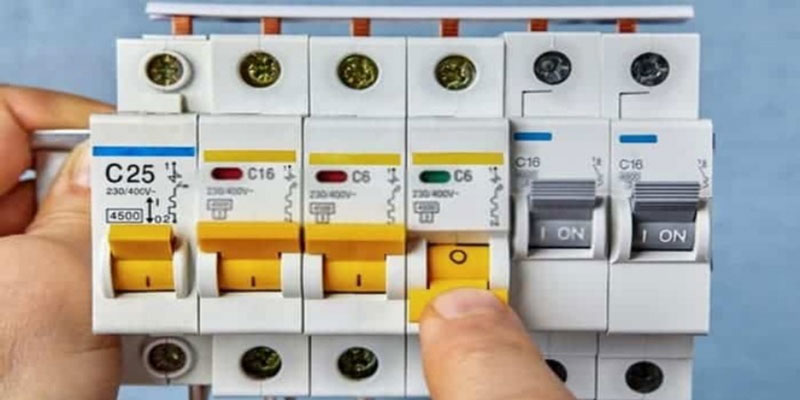What you should Think About Circuit Breaker Programs for Property Taxes
Oct 29, 2022 By Triston Martin
Many individuals, including families who have paid a disproportionate amount of their income through real estate taxes, seem to be eligible for "real estate tax electrical devices" or reimbursements from the provincial government. Eighteen states contribute about $3 billion annually to circuit breakers programs. All circuit protection programs aim to lessen the burden of property taxes on people whose tax bills would otherwise eat up a sizable chunk of their monthly take-home pay. However, there is a wide disparity between the programs offered by the 18 states and how they are administered. Eight states limit access to property tax breaks for the elderly and the disabled. In contrast, ten others open them to all families and individuals irrespective of background or ability to pay.
Expenses On Real Estate Vs. Taxes On Earnings
When a taxpayer loses their employment, their income drops, and their tax burden, although they are now less able to do so, their property taxes should remain the same. Homeowners' taxes are considered "regressive" because of this. The Institute of International Fiscal Policy and Economic Policy (ITEP) evaluated the fairness of state and municipal property tax systems. It concluded that taxes are unfair since they take a larger share of people's income than middle- and lower-class households. According to ITEP's research, the lower a person's total income, the higher their effective state and municipal tax rates are expected.
The Homestead Exemption As A Limiting Factor In Property Taxes

There are typically two methods by which states might reduce property taxes for low and middle-income households. These are known as both homestead deductions as well as state income tax circuit breakers. Regardless of income level, every taxpayer can benefit from a homestead exemption. A standard exemption reduces the tax by a certain monetary amount or a set percentage of the home's value. An example of something like a tax circuit is indeed a reduction or elimination of property taxes for a select group of taxpayers. Disabled or low-income homeowners, as well as the elderly, are commonly targeted by circuit breaker programs. This phrase was coined to describe the action of a circuit breaker, which is used to cut power to an overburdened circuit. In a similar vein, circuit protection programs are activated whenever property taxes consume a significant portion of a taxpayer's money income. The overload is mitigated or prevented altogether by the circuit breaker.
Distinct Tax Breaks For People With Low Or No Income
Many states employ some form of automated circuit breaker program. Circuit breakers that operate at a certain threshold constitute the most prevalent type. This is a sliding scale, depending on your income. Tax reduction kicks in if annual property tax payments reach a certain threshold as a share of household income. Customer income brackets are established using a sliding scale of circuit breakers. No matter how high or low a person's property taxes are, they are all entitled to a comparable amount of taxable relief throughout their bracket. This scheme's most property tax relief goes to the lowest income groups. As one's income grows, so does the percentage of one's assistance that gets taxed back.
Tax Breaks For States With Circuit Breakers
The federal government and 18 states have implemented this tax relief. For the same reason, many governments restrict their aid programs to senior citizens and people with disabilities because they are assumed to have lower incomes. In Vermont, the income threshold for qualifying is the highest at $147,000, while in Arizona, it is the lowest at $5,500. Another 13 states provide property tax benefits based on a low or fixed income or disability.
In Favor And Against Circuit Breakers

The state saves a lot of money since circuit protection programs target low- and medium-income families while reducing their tax burden rather than everyone. In addition, they provide the "capacity to pay" requirement because their response is based on a person's financial situation. As a result, these groups can pay more reasonable property taxes. Circuits and certain other initiatives are in place to prevent homeowners from losing their houses because of unpaid property taxes.
Conclusion
A homeland exemption and tax cap are examples of broad tax cuts which thus benefit homeowners throughout the income spectrum. In contrast, targeted tax advantages are sometimes given to specific groups, including low- through middle-income homeowners. A "circuit breaker" is a targeted scheme to lower property taxes. Like an electric circuit breaker, it kicks into action when a taxpayer's property tax bill reaches a specified percentage of their income. At this point, the tax amount is reduced. This discussion paper analyzes the merits and drawbacks of the circuit protection strategy for cutting property taxes.
-
![]() Banking
BankingTraveler's Check
Triston Martin Sep 05, 2022
-
![]() Investment
InvestmentTop 3 Index Funds For Investors With A Long-Term Perspective
Triston Martin Oct 28, 2022
-
![]() Investment
InvestmentEverything About the Top Microsoft Shareholders
Triston Martin Aug 30, 2022
-
![]() Banking
BankingOverview Of OpenSky Secured Visa 2022
Triston Martin Oct 11, 2022
-
![]() Banking
BankingIn What Ways Is a Credit Score of 760 Useful?
Triston Martin Jan 15, 2023
-
![]() Taxes
TaxesWhat you should Think About Circuit Breaker Programs for Property Taxes
Triston Martin Oct 29, 2022
-
![]() Investment
InvestmentThe Ultimate Guide To Investing in Mutual Funds
Triston Martin Apr 07, 2023
-
![]() Investment
InvestmentApple's Ownership of Six Other Businesses
Triston Martin Sep 01, 2022







